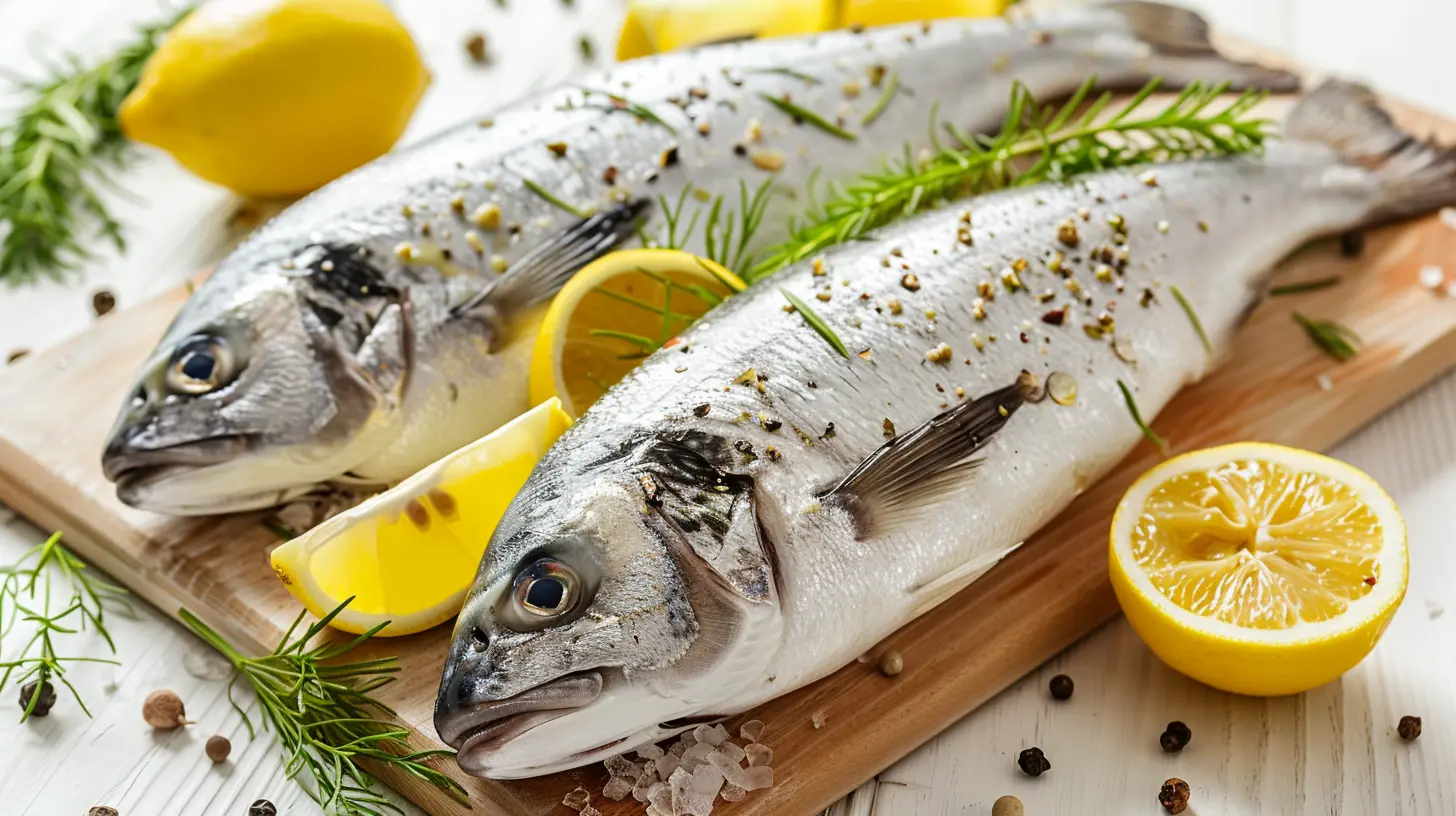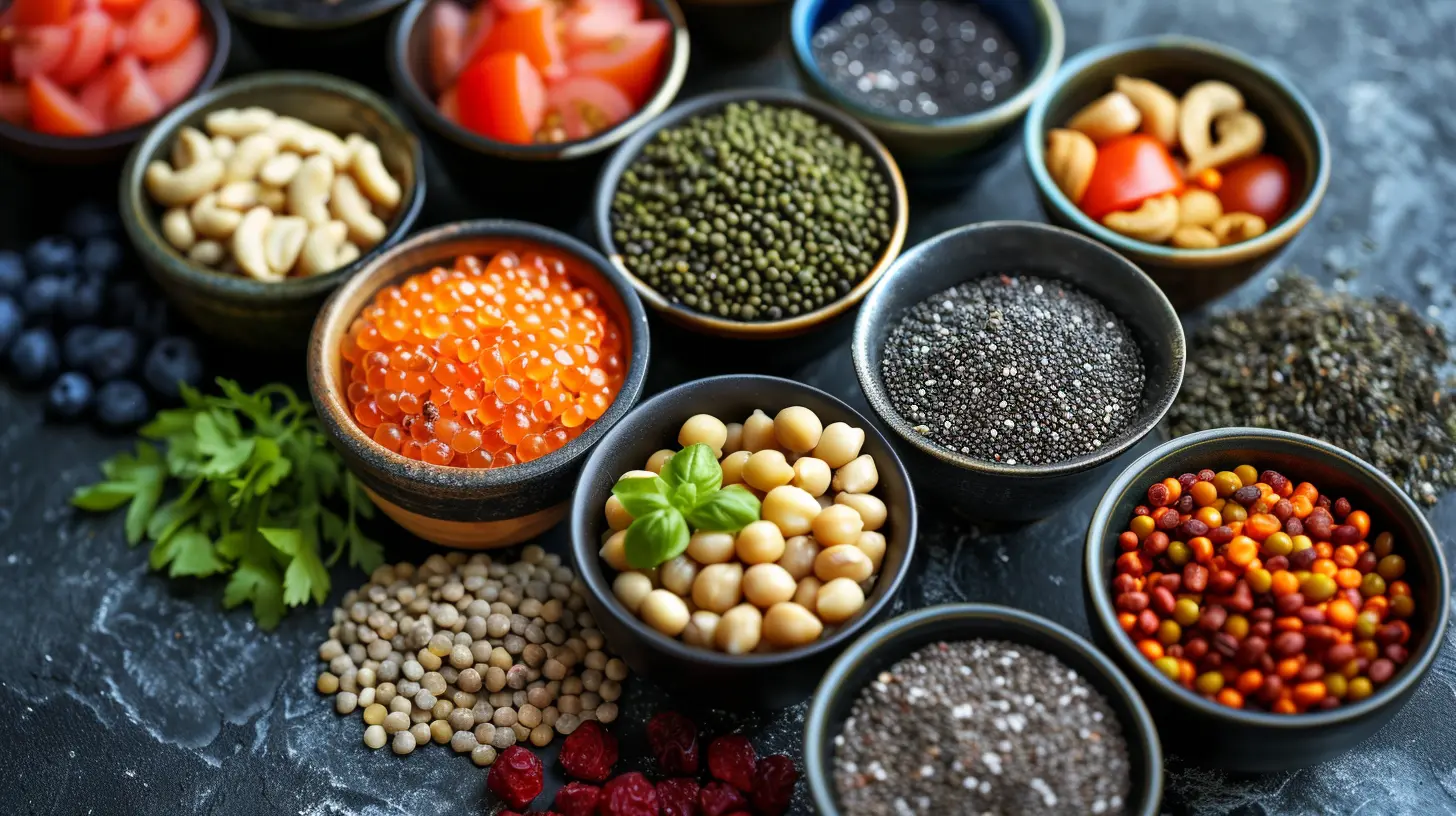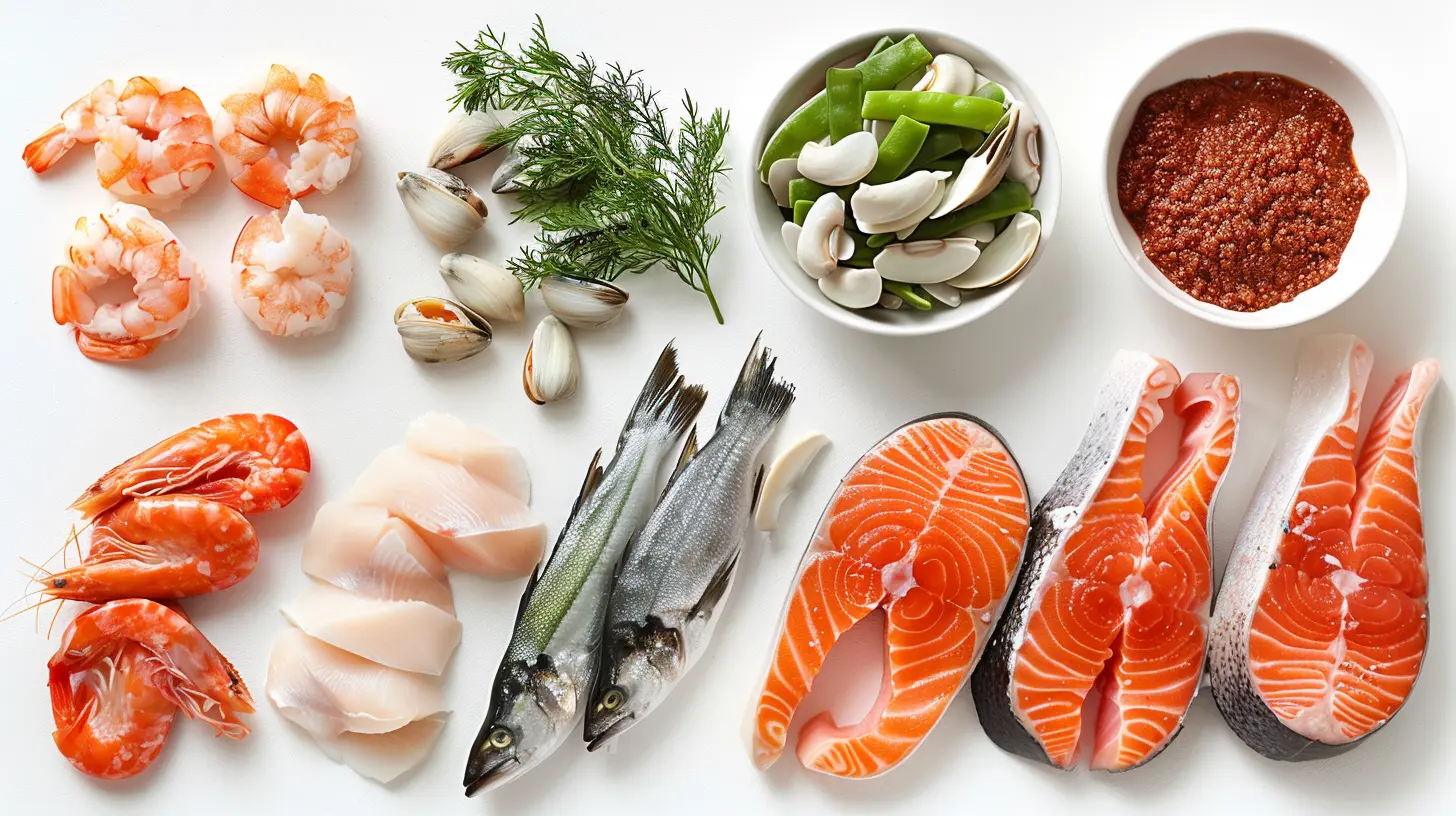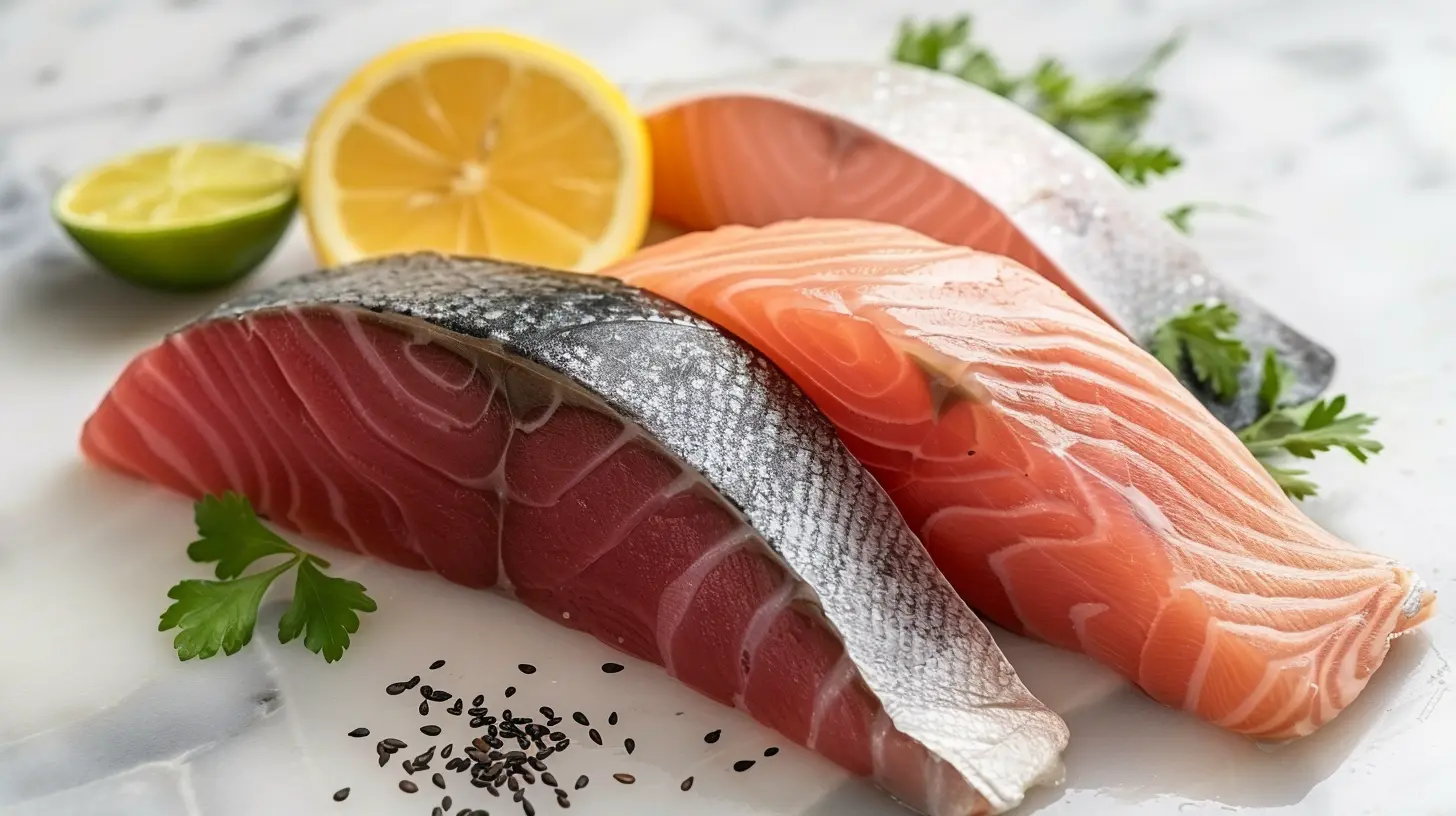Foods Rich in Omega-3s That You Should Be Eating
18 August 2025
If you've ever wondered why omega-3 fatty acids get so much buzz in the health world, you're not alone. These little dietary powerhouses are kind of like the VIPs of fats — they're essential, they do wonders for your body and mind, and the best part? You can get them just by munching on the right foods. Sounds pretty great, right?
But here's the problem: a lot of us aren't getting nearly enough omega-3s in our daily diet. That's a shame because these healthy fats aren't just good for us — they're crucial. From supporting heart health to keeping your brain sharp and your joints happy, omega-3s do a whole lot behind the scenes.
So let’s break it down — what are omega-3s, why should you care, and most importantly, which foods rich in omega-3s should you be eating on the regular?

What Are Omega-3 Fatty Acids, Anyway?
Omega-3s are a group of polyunsaturated fatty acids (aka the “good fats”) that your body can't make on its own. That means the only way to get them is through your diet. There are three main types:- ALA (Alpha-linolenic acid): Found mostly in plant oils like flaxseeds and walnuts.
- EPA (Eicosapentaenoic acid): Found primarily in fatty fish like salmon and sardines.
- DHA (Docosahexaenoic acid): Also found in fatty fish and incredibly important for brain and eye health.
Each type serves its own purpose, but together, they’re like the trio that keeps your body’s engine running smoothly. Think of them as maintenance workers for your cells — keeping things humming along behind the scenes.

Why Should You Care About Omega-3s?
Before we get into the actual foods, let’s talk about why these fats deserve a spot on your plate. Omega-3s are linked to a ton of health benefits. Here are just a few:- Support heart health by lowering triglycerides and reducing the risk of heart disease.
- Reduce inflammation, which can help with joint pain, arthritis, and even acne.
- Boost brain function and may even help protect against depression and anxiety.
- Promote healthy vision and cognitive development (especially during pregnancy and early childhood).
- May reduce the risk of chronic diseases like Alzheimer’s and cancer.
Pretty impressive, right? So the next logical question is...

How Can You Get More Omega-3s Into Your Diet?
Let’s dive into the best foods rich in omega-3s that you should be eating. Some of these you might already be enjoying, and others might just become your new favorites.
1. Fatty Fish (Salmon, Mackerel, Sardines, Tuna)
Let’s start with the obvious superstar: fatty fish. These are hands-down the richest source of EPA and DHA — the omega-3s your body loves the most.- Salmon: Just 3 ounces of cooked salmon gives you over 1,500 milligrams of omega-3s. That’s a huge win!
- Mackerel: A smaller fish but mighty in nutrients.
- Sardines: These little guys are packed not only with omega-3s but calcium and protein, too.
- Tuna: Especially the albacore variety. Great in salads, sandwiches, or straight from the can (we’re not judging).
Want an easy dinner hack? Grill or bake a salmon fillet with lemon and herbs — simple, delicious, and you’re loading up on omega-3s without even trying.
2. Flaxseeds and Flaxseed Oil
If you’re more plant-based or just not into fish, flaxseeds are your go-to. These tiny seeds are one of the richest sources of ALA omega-3s.- You can toss ground flaxseeds into smoothies, yogurts, oatmeal, or even sprinkle them on salads.
- Want a bigger punch? Try flaxseed oil. Just a tablespoon gives you more ALA than you’ll know what to do with.
Just one tip: always grind your flaxseeds before eating them. Your body can’t absorb the nutrients properly from whole seeds.
3. Chia Seeds
Another tiny seed with a big reputation, chia seeds are absolutely packed with omega-3s. They’re also full of fiber and protein — talk about a triple threat!A couple tablespoons of chia seeds in your smoothie or mixed into yogurt can help you get a healthy dose of ALA. Plus, they make an awesome chia pudding (pro tip: mix with almond milk, a little honey, and some berries – perfection).
4. Walnuts
Ever noticed how a walnut kind of looks like a brain? Well, it turns out that's pretty appropriate. Walnuts are a fantastic source of ALA and are especially great for brain health.They’re super easy to add to your day. Snack on them, toss them into salads, or stir them into baked goods. Just try not to eat the whole bag in one go — we’ve all been there.
5. Hemp Seeds
Not as mainstream (yet), but hemp seeds are an underrated source of omega-3s. They also bring a nice dose of protein and magnesium along for the ride.They have a mild, nutty flavor and are great sprinkled over yogurt, cereal, or smoothie bowls. You can even blitz them into homemade energy bars.
6. Algae Oil
This one's a great option for vegans and vegetarians looking to get their DHA and EPA without turning to fish. Algae oil comes from—you guessed it—algae, which is where fish get their omega-3s in the first place.Algae oil is usually found in supplement form, but you can also find some specialty cooking oils or fortified plant-based milks that use it. Super cool, right?
7. Seaweed and Nori
If you're a sushi fan, you're in luck. Seaweed and nori (the stuff that wraps your sushi rolls) naturally contain omega-3s. Again, it’s mostly ALA with some DHA variants depending on the type.You can enjoy seaweed in salads, soups, or as crispy snacks. It’s a fun way to work extra nutrients into your day.
8. Eggs (From Omega-3 Enriched Hens)
Not all eggs are created equal. Some are now fortified with omega-3s, especially those from hens fed an omega-3-rich diet (like flaxseed).If you're an egg-lover, choosing omega-3-enriched eggs is a super simple switch that adds nutritional value to your breakfast.
9. Edamame and Soy Products
Soybeans naturally contain some ALA omega-3s, especially when eaten in their whole form as edamame or processed minimally into products like tofu or tempeh.They’re also high in plant-based protein, making them perfect for those eating a vegetarian or vegan diet.
10. Brussels Sprouts
Yes, really! These cute little cabbage cousins are surprisingly rich in ALA omega-3s — especially when cooked.Roasted brussels sprouts with a little olive oil, salt, and pepper are a game-changer. Even the pickiest eaters might become fans.
How Much Omega-3 Do You Actually Need?
Experts recommend about 250–500 mg of combined EPA and DHA per day for healthy adults. If you’re pregnant, breastfeeding, or have certain health conditions, you might need more. When it comes to ALA, aim for around 1.1 grams per day for women and 1.6 grams for men.It sounds like a lot, but if you're eating the right mix of fish, seeds, nuts, and oils, hitting those numbers isn’t too tough.
Pro Tips for Boosting Your Omega-3 Intake
Let’s face it — knowing where omega-3s come from is one thing. Actually adding them to your meals without overthinking things? That’s another story. So here are a few super simple tips:- Swap your cooking oil: Use flaxseed oil or canola oil instead of vegetable oil.
- Snack smarter: Keep a small bag of walnuts, roasted soybeans, or trail mix with chia and flax on hand.
- Go fishy twice a week: Try to make room for salmon, tuna, or sardines in your weekly meal plan.
- Power up your smoothies: Add a tablespoon of ground flax or chia seeds.
- Start reading labels: Some dairy and non-dairy milks are fortified with omega-3s — bonus!
Final Thoughts
It's easy to think that something as important as omega-3s must require complicated meal prep or weird ingredients, but honestly? It doesn’t. With just a few tweaks to your daily routine — like adding seeds to your yogurt, choosing omega-3 eggs, or making fish a weekly staple — you can give your body the healthy fats it’s craving.At the end of the day, think of omega-3s as your body’s tiny cheerleaders. They support your heart, brain, eyes, and just about everything else in between. So why not give them the love they deserve?
Your future self will thank you.
all images in this post were generated using AI tools
Category:
Healthy FatsAuthor:

Sophia Wyatt
Discussion
rate this article
1 comments
Dahlia Harmon
Great article! Incorporating omega-3-rich foods into your diet can significantly enhance your overall health. Let's prioritize our well-being by enjoying delicious options like salmon, walnuts, and chia seeds!
August 26, 2025 at 4:02 AM

Sophia Wyatt
Thank you! I'm glad you enjoyed the article. Omega-3s truly are vital for our health, and those food options are excellent choices!


